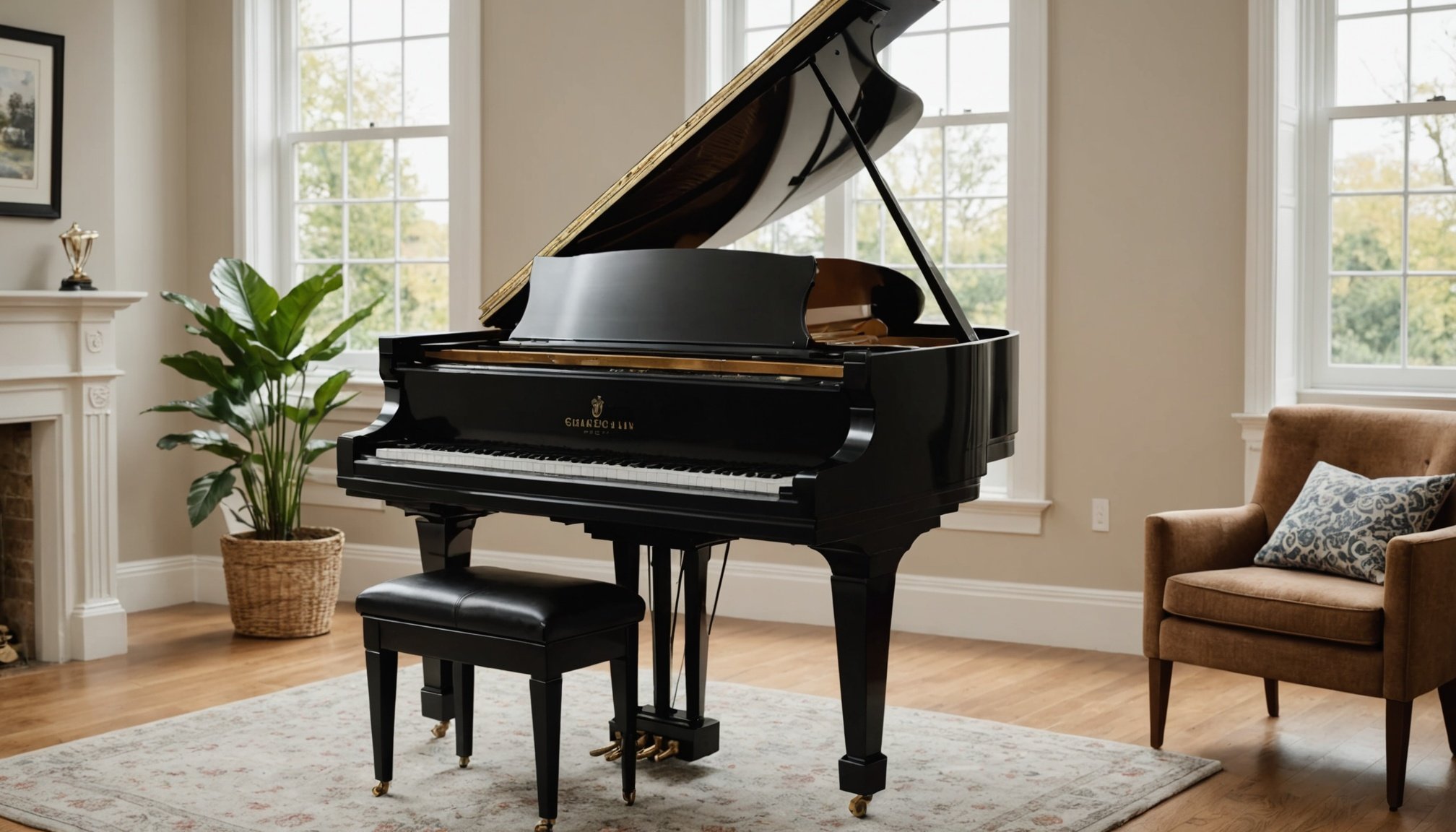Understanding the Importance of Proper Piano Moving
Moving a piano, particularly a grand piano, requires specialised techniques to ensure both the instrument and the people involved are safe. Employing appropriate piano moving safety measures is vital because pianos are not only heavy and cumbersome but also delicate and expensive.
Improper handling can lead to various issues. Damages might occur to the outer casing, strings, or internal components of the piano, leading to costly repairs. There is also a risk of injury to individuals attempting the move without the right equipment or skills. This is where the benefits of hiring professionals for grand piano relocation become apparent.
In the same genre : Discover the Ultimate Strategy for Efficient Box Labeling During Your UK Relocation
Professional piano movers are equipped with the necessary tools and expertise to handle such tasks safely. They utilise specialised equipment like piano skids, ramps, and dollies to manoeuvre the piano efficiently. This ensures that the instrument reaches its new location without suffering harm and without endangering anyone involved in the move.
In contrast, a DIY approach might appear to be a cost-saving measure but could result in greater expenses due to potential damages or injuries. By understanding these factors, one can make an informed decision about the best course of action when relocating a piano.
Also to read : Essential Local Permits You’ll Need When Relocating to Central London: A Comprehensive Guide
Preparing for Your Move
Moving a piano is a monumental task and planning is crucial to ensure its safe relocation. A piano moving checklist is essential for organisation during this endeavour.
Creating a Comprehensive Piano Moving Checklist
To create an effective checklist, include every possible detail related to the move. Begin by listing all necessary tools and equipment required for a piano move, such as moving blankets, straps, and a dolly. Don’t forget to note any professional help you might need. Having a well-detailed plan helps you avoid last-minute scrambles.
Assessing the Size and Weight of Your Grand Piano
Understanding the size and weight of your piano is important for determining how many people you will need for the move and the type of equipment required. Grand pianos vary significantly in size, and accurate assessment ensures you can take appropriate preparation steps.
Clearing the Path for Safe Movement
Before moving, it’s vital to measure all doorways and hallways the piano will pass through. Ensuring they can accommodate your piano without issues is essential to avoid damage. Identify any obstacles in the moving route, such as furniture or decor, that need to be repositioned. Ensuring a clear exit plan guarantees an efficient move.
Packing and Protecting Your Grand Piano
Properly packing a grand piano is an art in itself, requiring careful attention and appropriate materials. To begin, acquiring the right piano packing techniques is crucial for ensuring the piano remains undamaged during transport. Selecting adequate protective materials forms the foundation of a successful move.
To start, ensure you have these necessary materials: moving blankets, stretch wrap, padding, and tape. These materials are essential in safeguarding your piano’s delicate surfaces and structure. Wrapping the piano thoroughly with moving blankets provides a soft cushioning layer, while the stretch wrap secures them in place.
A strategic approach is vital when securing and cushioning the piano. Focus on critical areas such as the keyboard and pedals, as these are most susceptible to damage. When wrapping the keyboard, ensure no keys are exposed, as even minimal force can lead to misalignment. Using padding, surround the pedals, ensuring they are immobilized.
Protection goes beyond physical means. Piano packing techniques should include balancing the weight distribution to minimize undue stress on any part. When finished, the protective materials must snugly cover the entire instrument, leaving no surface exposed. Taking the time to follow these steps ensures your grand piano remains in prime condition, ready to fill spaces with beautiful music.
Choosing the Right Equipment for the Move
When relocating a piano, selecting the appropriate equipment and tools is crucial to ensure a safe and efficient process.
Essential Moving Tools and Their Uses
Moving a piano requires specialised tools that enhance both safety and convenience. Essential tools include:
- Dollies: These are particularly helpful for transporting pianos over short distances and flat surfaces, reducing the need for manual lifting.
- Straps: Utilised to secure the piano during transit, preventing shifts that may cause damage.
- Furniture pads: These provide a layer of protection against scratches or dents during the moving process.
Each of these tools plays a specific role in ensuring the piano remains intact and undamaged.
Considerations for Renting Moving Equipment
When opting for equipment rentals in the Birmingham area, it’s important to assess the quality and reliability of rental services. Factors to examine include:
- Availability of the necessary moving tools for pianos.
- Condition and maintenance of the equipment.
- Pricing and rental terms that suit your schedule and budget.
Rental services can vary significantly, so choose those with a reputation for dependable service and well-maintained equipment. Recommendations often include rental services that offer professional advice on using tools like dollies and straps effectively. Understanding these details can aid in making informed decisions, ensuring a smooth and stress-free moving experience.
Hiring Professional Moving Services in Birmingham
When on the hunt for Birmingham piano movers, knowing which factors to consider can significantly streamline the process. Prioritise understanding the company’s experience, insurance policies, and customer reviews. An experienced company typically ensures that your piano is transported safely and efficiently.
Key Factors to Consider
- Experience: Trust companies with a proven track record in piano moving. Their expertise is crucial for handling such delicate items.
- Insurance: Ensure the moving service offers comprehensive insurance coverage. This will protect against any damage during transit.
- Customer Reviews: Research feedback from previous clients to gauge reliability and professionalism.
Reputable Piano Moving Services in Birmingham
When considering moving service recommendations, you might want to explore companies like:
- Symphony Movers
- Melody Carriers
- Harmony Hauliers
Questions to Ask Potential Movers
To ensure you select the best service, pose these critical questions:
- What specific experience do you have with piano moving?
- Can you provide proof of insurance?
- How do you handle potential damages during transit?
By addressing these questions and assessing key factors, selecting the right Birmingham piano movers becomes a much more manageable task. Your piano deserves careful and experienced handling by trusted professionals.
Understanding Local Regulations and Challenges
Navigating the complex terrain of Birmingham moving regulations can be overwhelming. With a range of local ordinances to consider, it is essential to familiarise oneself with specific rules applicable to your move to ensure compliance. Regulations may dictate permissible moving hours, vehicle size restrictions, or even special permits required for certain neighbourhoods. Understanding these details is crucial to avoiding fines or disruptions.
Navigating Local Ordinances for Moving
Local ordinances in Birmingham often require movers to obtain permits for parking moving vehicles, especially in residential areas with limited street space. Familiarity with such regulations can streamline your move and prevent unnecessary delays. Additionally, knowing the regulations ensures that all moving activities, from loading to unloading, abide by municipal laws. Contact the local council for the most accurate information.
Common Challenges When Moving a Grand Piano
Moving a grand piano presents distinct challenges, requiring careful planning and consideration. The size and weight of the instrument necessitate specialised equipment and a skilled team to prevent damage. Strategies for overcoming these obstacles include hiring experienced movers and using customised packing supplies. Planning for setbacks, such as narrow hallways or staircases, is essential. Proper preparation helps in avoiding potential hiccups and ensures the safe relocation of your valuable instrument.
Cost Considerations for Moving Your Grand Piano
When planning a piano move, it’s essential to understand the components of piano moving costs. The total expense can vary significantly based on several factors.
Firstly, the size and weight of a grand piano can impact labour and equipment needs. Larger and heavier pianos naturally require more robust support, both in terms of manpower and moving tools. Secondly, the distance of the move is a significant factor. Local relocations are typically cheaper than interstate or international moves. The accessibility of both the current and new locations also plays into the cost. If the piano is on a higher floor or in a tight spot, additional effort and resources will be required, increasing the price.
To budget effectively for your piano relocation, start by obtaining multiple quotes from specialised piano movers. This allows you to compare services and pricing to ensure a cost-effective decision. Consider any potential additional fees such as insurance, which could prevent unexpected expenses during the move.
Also, plan for the potential need for temporary storage if immediate delivery to the new location isn’t feasible. By understanding these elements and planning accordingly, you can budget your piano move effectively and avoid unforeseen financial surprises.
Safety Tips During the Moving Process
When moving a piano, adhering to piano moving safety tips is crucial to preventing injuries and ensuring a smooth relocation.
Conducting a Safety Review Before the Move
Before you dive into the moving process, conduct a thorough safety review. This involves assessing the environment for potential hazards, such as slippery surfaces or narrow doorways, that could complicate the task. Identifying these risks early means you can take proactive measures, such as clearing pathways and securing flooring, to facilitate a safer move.
Techniques for Lifting and Carrying
Proper lifting techniques are paramount in injury prevention. Bend your knees, not your back, to leverage your leg muscles when lifting the piano. Maintain a firm grip and balance the weight evenly. Working with a team ensures that everyone takes a share of the load, reducing the strain on individual movers. Using equipment like dollies and straps can make the task easier and safer.
First Aid Tips for Minor Injuries
Even with precautions, minor injuries might occur. Having a first aid kit easily accessible is essential. It should contain bandages, antiseptics, and ice packs for immediate treatment. Following best practices for preventing injuries while lifting, such as stretching beforehand and taking breaks, minimizes the risk of harm. Remember, preparation and careful execution are the keys to a safe move.











